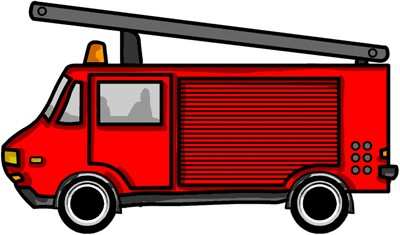Aero-Tips!
A good pilot is always learning -- how many times have you heard
this old standard throughout your flying career? There is no truer
statement in all of flying (well, with the possible exception of
"there are no old, bold pilots.")

Aero-News has called upon the expertise of Thomas P. Turner,
master CFI and all-around-good-guy, to bring our readers -- and us
-- daily tips to improve our skills as aviators. Some of them, you
may have heard before... but for each of us, there will also be
something we might never have considered before, or something that
didn't "stick" the way it should have the first time we memorized
it for the practical test.
Look for our daily Aero-Tips segments, coming each day to you
through the Aero-News Network.
Aero-Tips 10.30.06
Engine fires during start can happen any time for any number of
reasons, but by far they most frequently occur in cold weather from
over-priming. What should we do in the event of an engine fire
on the ground?

Checklist
Most aircraft manuals have a checklist that outlines steps to
follow in the vent of an engine fire on the ground. Not that you'd
have time to pull out the Pilots Operating Handbook (POH) if it
happens to you. You need to look in the POH for the airplane you're
flying and memorize the procedure for the unlikely event you'll
need to use it.
There are several variations on the procedure, but all contain
these basic steps:
- Mixture.................IDLE CUTOFF
- Fuel selector...........OFF
- CONTINUE CRANKING TO PULL FIRE INTO INDUCTION SYSTEM
- EVACUATE THE AIRCRAFT
Again, review the POH for the airplane you're currently flying
for the best technique to use.
Engine Types
There are two basic types of reciprocating aircraft engines:
- Carbureted engines. Fuel is combined with air
and then pulled into the induction system through the carburetor
venture. If a fire starts as a result of overpriming (or in some
types, aggressively pumping the throttle during start) but the
engine itself starts, suction may draw the fire inside the engine.
Hence the advice to keep cranking the starter, although I know of
no POH that provides any guidance on how long to keep
cranking.
- Fuel-injected engines. Fuel is delivered
directly to each cylinder, combining with air in the induction
manifold just before the intake valve. Overpriming a fuel-injected
engine may cause fuel to collect in the intake manifold, and
cranking after a fire starts may pull the flames into the
cylinders. But often overpriming a fuel-injected engine puts a lot
of fuel in the exhaust manifold, and starter operation will do
nothing to draw in the fire. So although continuing cranking may
help in some cases, it's not as likely to put out the external fire
as it might be with a carburetor.
Get out, check it out
It's fairly rare, but sometimes an engine fire after start
eventually consumes and destroys the entire airplane. Crank a few
seconds to try to draw in the fire, but then evacuate the aircraft
and get well away. If a large-capacity fire extinguisher is
available you might be able to put the fire out, but a small
in-cabin type may not be adequate. Get your passengers and yourself
out of danger.
If the fire does go out, whether through cranking or on its own
after you evacuate, get a mechanic to remove the cowling and take a
very good look at the aircraft for possible damage. If everything
checks out okay, consider a local test flight before venturing out
of the traffic pattern.
Avoidance
Carefully prime the engine before a cold-weather start. Preheat
the engine if the temperature is below about 40 degrees F to make
for an easier start. Better yet, hangar the airplane the night
before if at all possible. Even an unheated hangar often keeps the
engine warm enough to avoid the need for aggressive priming.
Aero-tip of the day: Know how to avoid engine
fires during start, and what to do if one happens to you.
 ANN's Daily Aero-Linx (04.15.24)
ANN's Daily Aero-Linx (04.15.24) Classic Aero-TV: 'No Other Options' -- The Israeli Air Force's Danny Shapira
Classic Aero-TV: 'No Other Options' -- The Israeli Air Force's Danny Shapira Aero-News: Quote of the Day (04.15.24)
Aero-News: Quote of the Day (04.15.24) Airborne 04.16.24: RV Update, Affordable Flying Expo, Diamond Lil
Airborne 04.16.24: RV Update, Affordable Flying Expo, Diamond Lil ANN's Daily Aero-Term (04.16.24): Chart Supplement US
ANN's Daily Aero-Term (04.16.24): Chart Supplement US




